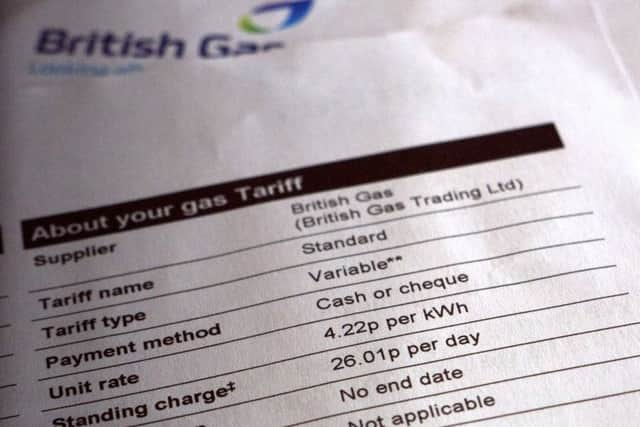Thousands of households across Derbyshire are living in fuel poverty
and live on Freeview channel 276
The figures, from the Department for Business, Energy and Industrial Strategy (BEIS) show that more than 5,500 households in the Chesterfield area alone being pushed into poverty by the costs of heating and lighting their homes properly.
In both the Erewash and Amber Valley districts, the number of households affected is more than 6,000, while in the High Peak and Derbyshire Dales districts, the study says one in 10 households are affected.
Advertisement
Hide AdAdvertisement
Hide AdAcross the East Midlands, around 230,000 households are in fuel poverty.


Each household is on average £349 short of their required energy bills each year – a measure called the ‘fuel poverty gap’.
A household is considered to be ‘fuel poor’ if it has fuel costs which are above the national average and if meeting those costs would push it below the poverty line.
A study published in February by fuel poverty charity National Energy Action (NEA) and climate-focused think tank E3G estimated that fuel poverty accounts for more than 1,000 excess winter deaths in England each year.
Advertisement
Hide AdPeter Smith, co-author of the study and director of policy and research at NEA, said: “We know that living in fuel poverty causes winter hardship and premature mortality.
Advertisement
Hide Ad“It’s been shown by not only our charity but also the committee on fuel poverty that says the Government’s existing set of policies aren’t sufficient in scale to address the problem.”
Across England, fuel poverty hits larger households hardest.
Households with four or more occupants are more than twice as likely to be in fuel poverty and have an average fuel poverty gap £100 higher than households with three or fewer occupants.
Advertisement
Hide AdThe figures also show that over a quarter of single parent households are fuel poor - a dramatically higher rate compared with the national average, and nearly twice as high as the rate for couples with children.
Households in private rented accommodation are twice as likely to be in fuel poverty than the national average, and have an average fuel poverty gap of £383 ‑ nearly twice as large as households in social housing.
Advertisement
Hide AdThis year, the Government predicts that the proportion of households in fuel poverty will decrease slightly, but that rising energy prices will push the national average fuel poverty gap up by nearly 10 per cent, from £326 to £357.
A BEIS spokesperson said: “We don’t want anyone to live in fuel poverty.
Advertisement
Hide Ad“We are introducing a temporary price cap to stop rip-off price rises and unjustified energy prices for households on standard variable and default tariffs.
“We’re also tackling the root causes by investing £6 billion in improving energy efficiency in some of the UK’s poorest homes over the next 10 years.”
However, Mr Smith says that the Government definition of fuel poverty fails to take into account families already below the poverty line, for whom even ‘low fuel costs’ are unaffordable.
He said: “The NEA also wants to see fuel bill discounts and energy price caps, available to those on benefits, offered to working families with low earnings.”